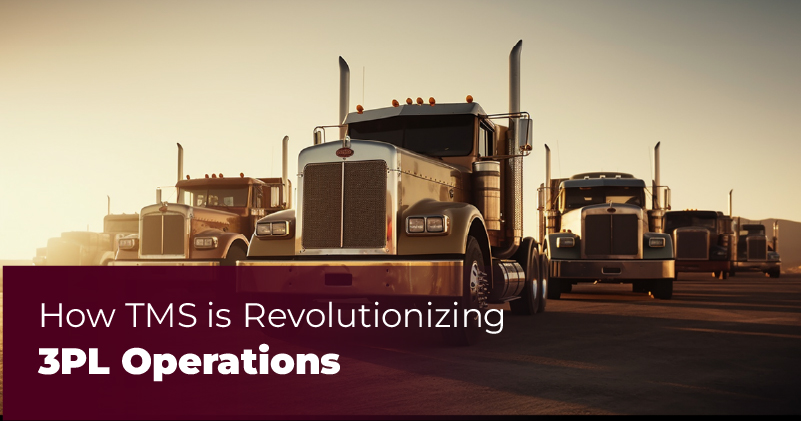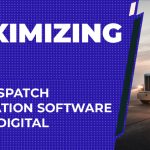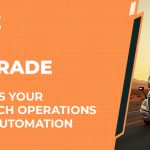
The logistics industry is undergoing a major transformation driven by rising customer expectations, globalization, and technological advancements. Third-Party Logistics (3PL) providers face increasing pressure to optimize operations, reduce costs, and ensure seamless deliveries. In this competitive landscape, leveraging technology has become essential for success. One of the most impactful solutions is Transportation Management Software (TMS), which helps 3PLs streamline supply chain operations, improve decision-making, and gain a competitive edge.
With the surge of e-commerce and the demand for faster, more reliable shipments, adopting a TMS is now critical for 3PLs looking to sustain profitability and meet market demands. This blog explores the role of TMS in 3PL operations, its key benefits, and how emerging technologies are shaping the future of logistics.
The Role of TMS in 3PL Operations
A Transportation Management System (TMS) plays a vital role in helping 3PLs optimize and streamline supply chain functions. By providing real-time visibility into shipments, TMS allows logistics providers to track freight movements accurately, minimize inefficiencies, and boost productivity. Additionally, it automates critical processes such as load planning, carrier selection, and freight auditing, reducing manual errors and operational bottlenecks.
A well-implemented TMS enables 3PLs to efficiently manage multiple transportation modes, optimize routes, and track performance metrics from a single, centralized platform. This not only enhances cost savings but also improves coordination among supply chain stakeholders. As logistics networks become increasingly complex, implementing a TMS is no longer optional—it is a necessity for achieving long-term success.
Key Benefits of Transportation Management Software
-
Cost Reduction
TMS solutions help 3PLs cut logistics expenses by 5-15% through enhanced route optimization and reduced fuel consumption. Additionally, automated freight audit and payment processes eliminate billing errors and prevent overcharges, improving overall cost efficiency.
-
Increased Operational Efficiency
Manual logistics operations slow down workflows and increase the risk of human errors. A TMS automates dispatching, scheduling, and reporting, significantly enhancing efficiency and reducing the time required to complete routine tasks.
-
Enhanced Visibility and Tracking
Modern TMS platforms provide real-time shipment tracking, enabling logistics providers to proactively manage potential delays and enhance customer satisfaction. Live GPS tracking and automated alerts help 3PLs respond swiftly to disruptions.
-
Optimized Carrier Management
A TMS allows 3PLs to compare carrier rates, performance, and transit times, ensuring that they always select the most cost-effective and reliable shipping partners.
-
Compliance and Risk Management
With constantly evolving transportation and logistics regulations, compliance management is crucial. A TMS automates documentation, regulatory reporting, and risk assessments, helping 3PLs avoid penalties and maintain industry compliance.
The Future of Transportation Management Software in 3PL Operations
The global TMS market is expected to reach $31.18 billion by 2028, growing at a CAGR of 16.2%. This rapid growth highlights the increasing reliance on transportation management solutions for optimizing logistics operations. Here are some key technological trends shaping the future of TMS for 3PLs:
AI and Machine Learning in TMS
Artificial Intelligence (AI) and Machine Learning (ML) are transforming transportation management by enabling predictive analytics. These technologies help 3PLs forecast demand, optimize delivery routes, and reduce delays. AI-driven decision-making ensures faster response times to disruptions and improves overall operational agility.
Cloud-Based TMS
Cloud-based TMS solutions are gaining popularity due to their scalability and cost-effectiveness. Unlike traditional on-premise systems, cloud platforms provide real-time updates, seamless integrations with ERP and WMS solutions, and remote access capabilities. These benefits allow logistics managers to oversee operations from anywhere, improving flexibility and decision-making.
Integration with IoT and Telematics
The integration of IoT (Internet of Things) and telematics with TMS enables real-time monitoring of vehicle performance, fuel consumption, and driver behavior. IoT sensors provide instant alerts on vehicle conditions, preventing unexpected breakdowns and reducing downtime. Moreover, telematics solutions improve driver accountability and regulatory compliance, ensuring adherence to safety and efficiency standards.
Choosing the Best Transportation Management Software for 3PLs
When selecting a TMS, 3PLs should consider the following key factors:
- Scalability: The software should be capable of growing with the business.
- Integration Capabilities: Seamless connectivity with existing ERP, WMS, and telematics systems is crucial.
- User-Friendly Interface: An intuitive design ensures quick adoption and reduces training time.
- Advanced Analytics: Real-time insights drive better decision-making and optimize logistics processes.
- Reliable Customer Support: 24/7 technical assistance ensures smooth operations and minimizes downtime.
Conclusion
In today’s rapidly evolving logistics landscape, a Transportation Management System (TMS) is no longer a luxury but a necessity for 3PLs looking to optimize efficiency, reduce costs, and enhance customer satisfaction. By leveraging AI, cloud computing, IoT, and real-time analytics, the best TMS platforms empower 3PLs to stay ahead of the competition and meet the increasing demands of modern supply chains.
As the industry continues to evolve, investing in a cutting-edge transportation management solution will be the key to achieving long-term success. Ready to transform your logistics operations? Contact TMS-Digital today to schedule a demo and discover how our TMS solutions can revolutionize your supply chain.










